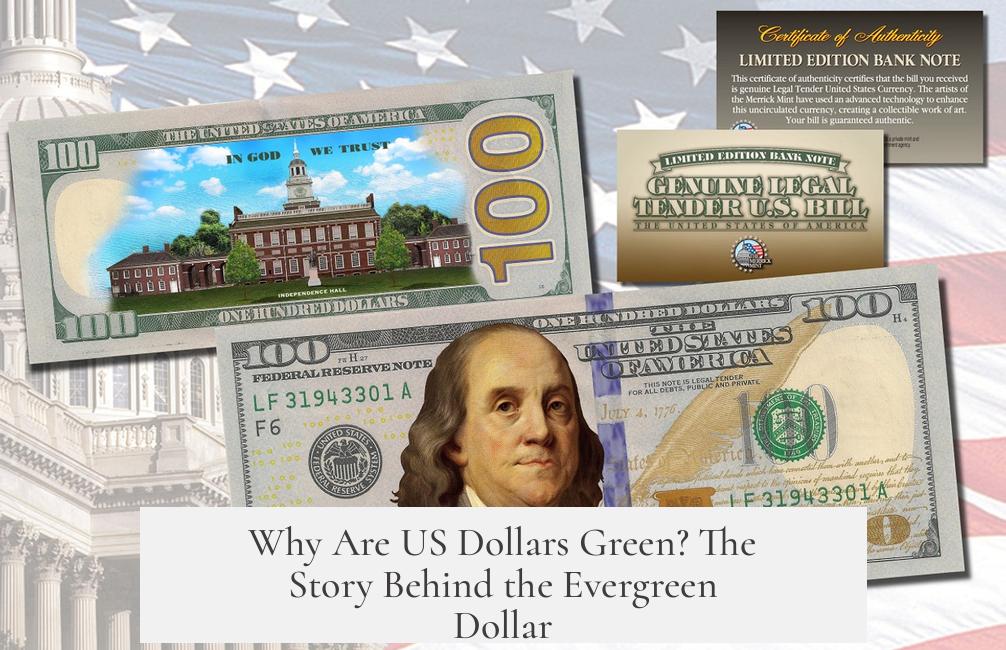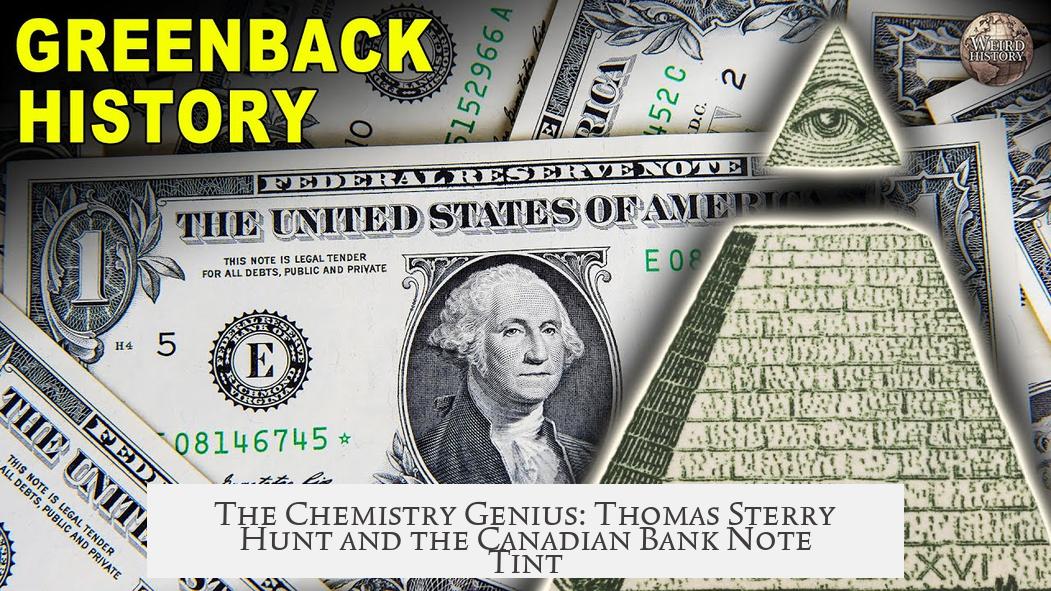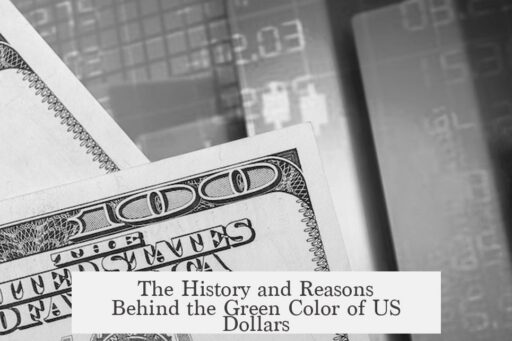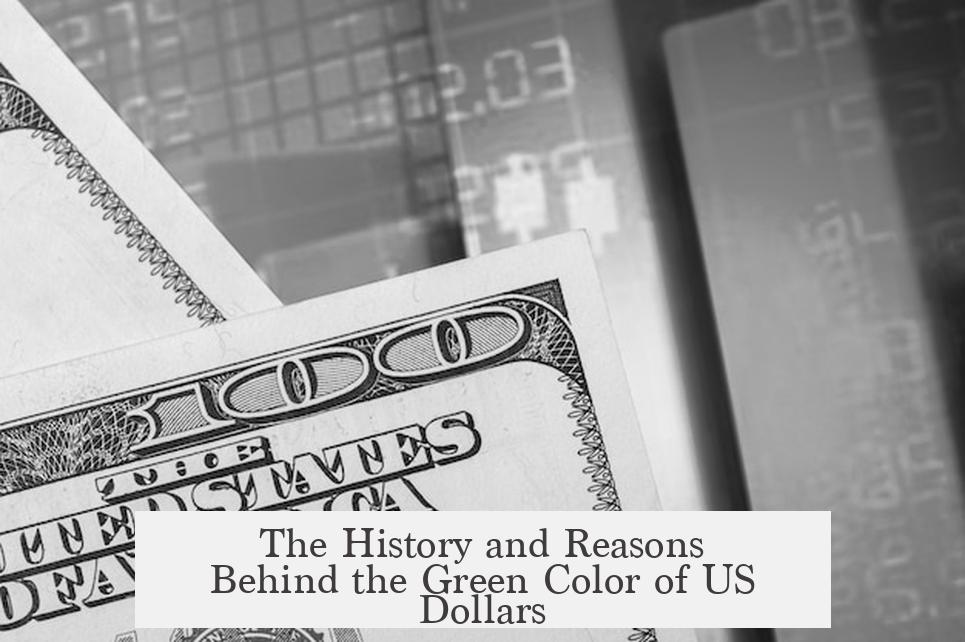US dollars are green primarily due to historical and security reasons. The green color began with the greenback Demand Notes and US Notes issued during the Civil War. These notes were distinct because they were not backed by precious metals unlike earlier currency. The use of green ink helped differentiate these government-issued notes from state-chartered banknotes.
The choice of green also served as an anti-counterfeiting measure. Photography enabled counterfeiters to reproduce banknotes by creating printing plates from photographs. However, cameras struggled to accurately capture colored inks, especially green. To counteract this, banks started printing notes using black and colored inks. This combination made it difficult to produce perfect replicas, as photographs often failed to reproduce the green areas precisely.
Counterfeiters responded by chemically removing the colored ink, photographing the black ink, and then manually recreating the colored plate. This ongoing battle pushed for more resilient inks resistant to removal and reproduction techniques.
An important attempt to improve note security involved Thomas Sterry Hunt, an American chemist working in Canada. He developed a green chromium-based ink called Canada Bank Note Tint. This ink was designed to resist chemical removal without damaging the paper and to be difficult to photograph accurately. Hunt proposed it to Canadian bankers, hoping to enhance their currency security.
Despite its intended durability, within a few years chemists found methods to remove Hunt’s green ink. Consequently, Canada did not adopt this ink for widespread use. However, the US Treasury determined that Hunt’s ink was secure enough for American currency. This ink’s relative resilience contributed to the green color becoming the standard for US dollars.
- Green ink originated with Civil War-era government-issued notes called greenbacks.
- Green was chosen to hinder counterfeiters exploiting photography and printing techniques.
- Thomas Sterry Hunt’s green chromium-based ink introduced additional chemical resistance.
- Though not foolproof, Hunt’s ink was adopted by the US Treasury, standardizing green ink on US dollars.
Why Are US Dollars Green? The Story Behind the Evergreen Dollar

US dollars are green primarily because of historical anti-counterfeiting efforts linked to the Civil War era. But that’s just the starting point. The tale of the greenback isn’t just about color choice. It’s a fascinating blend of history, chemistry, and a dash of early detective work against counterfeiters trying to game the system.
Let’s dig in. Why exactly are the bills green? Fasten your seat belts. This is not your ordinary currency color story.
The Origin of the Green Color: The Civil War and the Birth of the Greenback
We have to rewind to the 1860s—right in the middle of the Civil War. Before then, US currency looked very different. The US issued notes through state-chartered banks, and the federally chartered banks—the First and Second Banks of the United States—also had their own style. These early currencies were often backed by precious metals like gold or silver.
Enter the Demand Notes and US Notes: the first green US banknotes. These were issued during the Civil War and were revolutionary for two reasons. First, they weren’t backed by precious metals but by government trust. Second, and critically for our story, they sported a distinct green color.
This green color wasn’t a mere fashion statement. It earned the nickname “greenbacks,” which stuck.
Why Green? A Smart Anti-Counterfeiting Move
In those days, banknotes were ripe for forgery. Counterfeiters were getting pretty cunning, especially thanks to photography. Yep, someone figured out how to photograph a banknote and create printing plates from the image. This was a game-changer for those making fake bills.
To thwart these forgers, banks used a combo of black and colored ink—green in particular. The clever part? Early photography struggled with accurately capturing the green ink. Black ink showed up clearly, but green? Not so much. This made it harder for counterfeiters to replicate the bills perfectly since the photograph would only capture either the black or the faint green poorly.
However, crafty fraudsters fought back. They’d use chemical solvents to strip off the green ink without touching the black, photograph the black ink, and then painstakingly paint the green layers by hand. It was a fibrous war of paint and chemistry.
The Chemistry Genius: Thomas Sterry Hunt and the Canadian Bank Note Tint

The US wasn’t alone in this green quest. Thomas Sterry Hunt, an American chemist living in Canada, invented a green chromium-based ink. He called it the Canada Bank Note Tint. Now, Hunt believed his ink was chemical-proof—once printed on paper, no solvent could remove it without wrecking the paper itself.
He pitched this to Canadian bankers who dreamt of a secure currency. The greenish tint was difficult to photograph, boosting anti-counterfeiting defenses. It was brilliant when you imagine it: green ink that tricks both eyes and cameras!
Limitations and the US Treasury’s Decision
Hunt’s tint sounded perfect, but science keeps moving. Within a few years, other chemists found ways around his ink’s defenses. Some solvents and treatments stripped the green off cleanly, and Hunt’s ink was no longer the invincible shield it once seemed.
Canada, smart as they are, decided against adopting it. The risk of counterfeiters cracking the system too soon outweighed the benefits.
The US Treasury, however, wasn’t in a position to be too picky. They adopted Hunt’s green chromium-based ink regardless. Why? Because it was still a step up from what they’d used before. While not perfect, it added enough complexity to deter casual counterfeiters and add layers to the ongoing cat-and-mouse game.
Why the US Stuck with Green All These Years
Beyond chemistry, green ink had practical advantages. The pigments used in green ink were plentiful and relatively inexpensive. Stability over time mattered too—green ink resisted fading and smudging under typical handling conditions better than other colors.
Plus, the green hue became a symbol. It differentiated US currency clearly from other nations and helped solidify trust in the money. People grew to associate green bills with the reliable, traditional cash in their wallets.
And let’s face it: over 150 years of tradition make “going green” a standard everyone recognizes instantly.
What About Modern Anti-Counterfeiting?

Today’s greenbacks look pretty similar but pack a lot more high-tech tricks: watermarks, microprinting, security threads, raised printing, color-shifting ink, and complex patterns. Yet the green color remains. It’s part of the brand of US currency.
Is green perfect? No. Would another color be better? Possibly. But the green back is woven deep into history and culture now. Changing it would be like swapping out baseball for cricket here—it just feels wrong to many Americans.
Takeaway: The Green Dollar Is a Blend of History, Chemistry, and Practicality
So next time you hold a US dollar, remember it’s more than just green paper. It’s a little wartime history, a lot of chemistry ingenuity, and decades of practical decisions that together shaped what the dollar looks like today.
Isn’t it amazing how something as simple as a color can carry so much meaning and protection? The green dollar tells a story not just of money but of innovation and defense against fraud.
And if you think green money is just an American thing, remember Hunt’s Canadian connection—cross-border chemistry meets global finance!
Maybe next time you pay for your coffee, you’ll glance at your greenback and appreciate its rich, colorful past.



